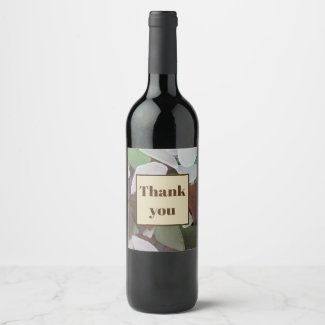Last weekend, I was looking through my collection of sea glass and I offered a few suggestions about what to look for and where to collect in my last blog post. Today, I would like to share a few finds that are a little less common and thrilling when found well tumbled on the shore.
These two were among my first finds on South Padre Island in Texas and began my hunt for sparkling treasures any time I find myself along a coast. The blue is fairly rare and likely from an old Noxzema container, Vicks bottle, or other medication or poison that has not been packaged in cobalt blue glass for a long time. I have a few cobalt blue pieces but not many. The knob is slightly bowed underneath so I would think the lid to pottery jar or jug. Both are exceptionally smooth and well tumbled. Both likely churning in the ocean for 50 years or more.
At times I will find glass with writing, patterns, or the spirals of the neck of a bottle which are always fun to try to identify. The spiral pieces are not that unusual to find and almost always in colors of white, brown, and green. Think beer bottles, wine bottles, and the like. Depending on the curve of the piece, you can judge how wide the opening of the bottle might have been to take a guess as to the container. The white piece on the right is fairly curved so I am thinking wine bottle more than likely. You might not be able to tell from the photo but the brown piece is far less curved and to complete the circle it would be a fairly wide mouth. Something more along the size of a canning jar opening might be about right for the brown piece. I don't believe that canning jars were made in dark brown however the size would be about right.
There are also pieces that I keep coming back to as I have no idea what they might be from. Both of these were found on Fort Ord Beach in California on my last trip in very early March. The light green is a piece of milk glass that is super smooth with the exception of a tiny chip out of the corner. There are some collectors that are very particular about their collection and the chip would have caused them to throw the piece back to the ocean to tumble more but this is the first and only piece of milk glass that I have ever found so it is a keeper for me. The other "wand" is a complete mystery to me. It is very well tumbled, clouded, and very smooth. I guess I imagine a perfume bottle top and perhaps one end was much larger at one time. Perhaps medications for skin wounds and such that required application might have had something like this at one time. Every once in awhile, I sit down and search for something close to this piece but no luck so far. If anyone has any ideas, leave me a comment. I am always open to ideas and suggestions.
The joy of collecting anything comes not only from the thrill of the hunt but also from the ability to derive joy from displaying or admiring your collection. For me, collecting sea glass allows me to relive memories of trips and the people who have shared those trips with me. The glass pieces themselves have the ability to transport me back in time and imagine how the glass might have ended up in the ocean.




Comments